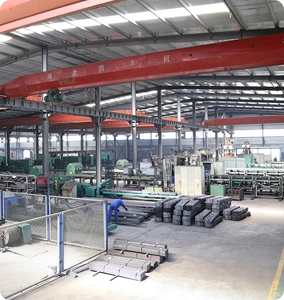Exploring Expanded Metal Wire Mesh Versatility and Applications
Expanded metal wire mesh is a versatile material that serves numerous purposes across various industries. Produced by an innovative manufacturing process that transforms a solid sheet of metal into a network of interconnected strands, expanded metal offers unique benefits over traditional materials. Its properties, coupled with its wide array of applications, make it an essential component in construction, manufacturing, and design.
Manufacturing Process
The production of expanded metal involves cutting and stretching a flat sheet of metal, which results in a mesh-like structure. This technique creates diamond-shaped openings, offering both strength and flexibility. The most common metals used to create expanded wire mesh include aluminum, steel, and stainless steel. The choice of material usually depends on the specific requirements of an application, such as weight, strength, and resistance to corrosion.
Strength and Durability
One of the key advantages of expanded metal wire mesh is its strength-to-weight ratio. Despite being lightweight, it maintains incredible load-bearing capabilities. This strength is particularly beneficial in applications where reducing weight is crucial without compromising on durability. Furthermore, the open structure of expanded metal allows for superior airflow and visibility, making it ideal for various architectural and industrial uses.
Applications in Construction
In the construction industry, expanded metal wire mesh is commonly used for reinforcing concrete and plaster. Its grid-like structure ensures even distribution of load and prevents cracking, thus enhancing structural integrity. Additionally, expanded metal is often employed in stair treads, safety barriers, and partitions, providing both functional and aesthetic benefits. Its ability to resist corrosion makes it perfectly suited for outdoor applications, including fencing and walkways.
expanded metal wire mesh

Industrial Uses
Beyond construction, expanded metal wire mesh sees widespread use in various manufacturing industries. It is frequently utilized in screening applications, such as separation of materials in recycling plants or as protective grilles in machinery. Additionally, the mesh can be found in filtration systems, where its open structure allows for filtering liquids and gases while providing durability and ease of maintenance.
Design and Aesthetics
Architects and designers appreciate expanded metal for its aesthetic versatility. The unique patterns created by the expanded mesh not only deliver functional benefits but also add visual interest to various projects. From modern office interiors to decorative facades on buildings, expanded metal can enhance both the safety and style of a space. Designers often use it in furniture designs to create eye-catching installations that blend aesthetics with practicality.
Environmental Benefits
Using expanded metal wire mesh also promotes sustainability. Its lightweight nature reduces the amount of material needed, which lessens the overall carbon footprint of a project. Moreover, many manufacturers utilize recycled metals to produce expanded mesh, further contributing to eco-friendly practices in construction and design.
Conclusion
In summary, expanded metal wire mesh is a multifaceted material that combines durability, safety, and aesthetic appeal. Its unique manufacturing process and structural properties make it indispensable in a variety of applications, from construction and manufacturing to design. As industries continue to evolve, the demand for innovative materials like expanded metal wire mesh is likely to increase, solidifying its role as a cornerstone in modern architecture and industry. Through its versatility, expanded metal offers limitless possibilities for integrating strength, style, and sustainability into our environments.
-
The Best Metal Mesh Solutions: Expanded Aluminum Metal vs. Expanded Stainless Steel Metal
NewsSep.10,2024
-
Round Perforated Sheets vs. Hexagonal Perforated Sheets vs. Embossed Perforated Sheet Metal
NewsSep.10,2024
-
Perforated Metal Sheets
NewsSep.10,2024
-
Experience The Excellence Of Stainless Steel Grating
NewsSep.10,2024
-
Discover the Versatility Of Metal Mesh Expanded Forming Machines
NewsSep.10,2024
-
Discover The Advantages Of Steel Grating For Sale
NewsSep.10,2024
Subscribe now!
Stay up to date with the latest on Fry Steeland industry news.

